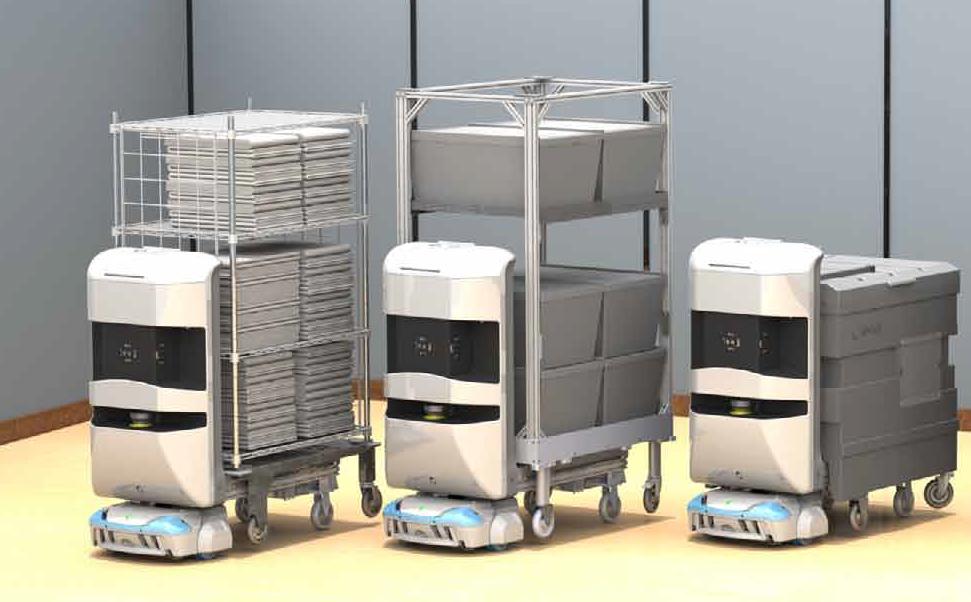
Engage every employee in improvement and you won’t think of replacing them with robots.
By Mark Graban
A recent story in the Wall Street Journal promises (or threatens) that robots are taking over our hospitals, replacing minimum wage “blue collar” positions. The Journal paints a picture of robots rolling through hospital hallways, efficiently delivering medications and supplies without needing to take breaks or stopping to chat about their tournament brackets. Even if robots deliver their promised cost savings, there’s one critical thing even the smartest robots can’t do – generate and implement ideas for making the hospital better.
There is a certain “gee whiz” factor with robotics and technology that often captivates the executives who control the purse strings. Some patients might be impressed and associate robotic supply delivery with a cutting-edge health system that delivers the best care. However, many patients will see robots as something that dehumanizes what can already be a scary, stressful place.
Robots are an expensive upfront cost and they require ongoing spending for maintenance and reprogramming. In a hospital setting, a robotic “tugger” might be able to pull boxes to an inpatient unit’s supply room, but a human is still required to actually place individual boxes and linens onto shelves. The robots arguably automate a relatively small piece of the delivery process.
Companies that sell robots see healthcare as a new market opportunity, but hospital leaders need first to ask what problem is being solved with this technology. Is the hospital unable to fill relatively low-skilled positions? That seems unlikely, given high unemployment rates. Are there safety or ergonomic risks involved in rolling a cart of linens from central supply to inpatient units? Robots might reduce that risk of employee injury, but there might be other ways to address that problem, such as carts with better handles and wheels that roll more smoothly.
In the video that accompanied the Journal story, the reporter commented that “the robots have highly sophisticated brains,” referring to the sensors that prevent them from running into people. But there are so many things that robots can’t do.
Human workers actually have the more impressive brains, because all people, even those making the minimum wage, have the ability to make improvements in the workplace. A human delivering linens can offer a friendly smile to patients who are rehabilitating in the hallway. Humans can notice a visitor who looks lost, pointing them in the right direction and then initiating improvements to hospital signage that prevents others from getting lost in the future.
The “kaizen” improvement methodology is being used increasingly by hospitals around the world. Kaizen, which was brought from Japan to the West by author Masaaki Imai in his 1986 book of the same name, was originally portrayed as a system to be used by factory workers. The idea that everybody “from the janitor to the CEO” can make improvements (without the fear of layoffs) is one of the best ideas that hospitals can adopt from manufacturing.
Franciscan St. Francis Health System, in Indianapolis, is five years into its “quick and easy kaizen” program. In 2011, 46 percent of its approximately 2,500 employees initiated and completed at least one improvement. Many of these ideas did not have a specific “return on investment,” as they were small changes that made their work more productive or improved care and service for patients. Examples include moving a noisy paper towel dispenser in the NICU or finding a better way to provide privacy for nursing mothers. Conservative estimates place the annual savings from this program at about $3 million per year.
Hospitals like the University of Michigan Health System and ThedaCare (in Wisconsin) trumpet their goal of every employee being a problem solver every day. The leaders in these organizations encourage their employees to participate, while supporting, assisting, and recognizing them for their efforts. The kaizen model is a shift from leaders solving every problem and yet it’s not a process where problems are just dumped on frontline staff, either.
Traditional organizations (in manufacturing or healthcare) view employees as a cost to be reduced, while organizations that embrace kaizen realize that the brain of each employee is their greatest asset. One of the ways healthcare can address the crisis of high costs and poor quality is to ask all employees and clinicians to share and implement their ideas. Leaders then need to help provide a structured process and the right management support to allow changes to happen. The front-line staff members are in the best position to understand and solve many of the problems that hospitals face.
In the Journal video, a reporter praised the robots for consistently doing what they are told. That’s actually a huge problem. They can only do what they’re programmed to do, while people can do so much more.
* * *
Mark Graban is a consultant, author, keynote speaker and blogger in the world of “lean” healthcare. In June 2011, Mark joined the software company KaiNexus as their Chief Improvement Officer, to help further their mission of “making improvement easier” in healthcare organizations, while continuing his other consulting and speaking activities.
He is the author of the book Lean Hospitals: Improving Quality, Patient Safety, and Employee Engagement (Productivity Press), which was selected for a 2009 Shingo Research and Professional Publication Award. Mark has also co-authored a new book, titled Healthcare Kaizen: Engaging Front-Line Staff in Sustainable Continuous Improvements, released in June 2012.












